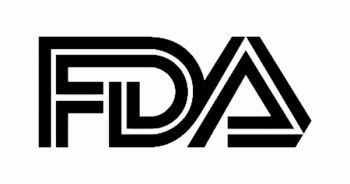
Targeted Therapies in Oncology
- May I 2025
- Volume 14
- Issue 6
- Pages: 35
T-DXd’s Robust Efficacy and Response Continue in Frontline MBC
T-DXd monotherapy and T-DXd plus pertuzumab continue to show robust efficacy in HER2-positive metastatic breast cancer.
Both trastuzumab deruxtecan (T-DXd; Enhertu) monotherapy and T-DXd plus pertuzumab (Perjeta) continue to show robust efficacy in the frontline treatment of patients with HER2-positive metastatic breast cancer (MBC), according to findings from an efficacy and subgroup analysis of the phase 1b/2 DESTINY-Breast07 trial (NCT04538742). Findings were presented by Fabrice André, MD, PhD, during the European Society for Medical Oncology (ESMO) Targeted Anticancer Therapies Congress 2025 in March.1
André reported that the median progression-free survival (PFS) had not yet been reached and that the confirmed objective response rates (ORR) for the monotherapy and the combination were 77.3% (95% CI, 70.0%-83.6%) and 84.0% (95% CI, 75.3%-90.5%), respectively. For both arms, the duration of response (DOR) was not evaluable (NE).
At 12 months, the PFS rates were 82.6% (95% CI, 75.8%-87.7%) and 87.5% (95% CI, 79.8%-92.4%), respectively, and at 18 months, the PFS rates were 78.2% (95% CI, 70.9%-83.8%) and 78.8% (95% CI, 69.9%-85.3%), respectively.
André reported on an interim analysis of the part 2 dose-expansion phase for the T-DXd monotherapy arm (n = 75), in which patients with locally assessed HER2-positive advanced MBC and no brain metastases received 5.4 mg/kg intravenously every 3 weeks, and for the combination arm (n = 50), in which patients received 5.4 mg/kg T-DXd and 420 mg pertuzumab every 3 weeks.
“It’s important to note that patients had no prior therapy for MBC,” André said during his presentation. André is a professor of medicine at the University of Paris-Saclay and director of the Division of Research, Breast Cancer Unit, and a professor in the Department of Medical Oncology Department at Institut Gustave Roussy in Villejuif, France.
The part 1 dose-finding phase of the study had been described previously2 at data cutoff (DCO) on December 22, 2023. The median duration of follow-up at this DCO was 23.9 months (T-DXd) and 25.3 months (T-DXd + pertuzumab). Primary end points for the part 2 dose-expansion phase were safety and tolerability. Key secondary end points for part 2 were ORR, PFS, and DOR.
In the monotherapy arm (n = 75), the median age was 57.0 years (range, 33.0-80.0); in the combination arm (n = 50), the median age was 56.5 years (range, 24.0-75.0). The majority of patients were White (69.3% and 74.0%), had hormone receptor-positive status (62.7% and 68.0%), and had an ECOG performance status of 0 (65.3% and 74.0%), respectively.
“Thirty-six percent of patients in the monotherapy arm and 40.0% of patients in the combination arm had recurrent disease,” André said. “Across both arms, approximately 50.0% to 65.0% of patients [whose disease] recurred were previously treated with HER2-directed therapy,” André noted.
Investigators reported that 34.7% of patients in the monotherapy arm had high-level (≥ 20%) tumor-infiltrating lymphocytes (TILs), compared with 38.0% of patients in the combination arm. In the monotherapy arm, 41.3% of patients had low-level TILs (< 20%) compared with 52.0% for the combination arm.
In the monotherapy arm, nearly 51.0% of patients discontinued treatment compared with 56.0% in the combination arm, with 21.3% discontinuing for objective disease progression vs 22.0%, respectively.
“When we focus on T-DXd as a single agent, the response rate was 77.4% with a complete response of 10.7% and partial response of 66.7%,” André said. “In the combination, the response rate was 84.0% with a complete response of 20.0% and a partial response of 64.0%,” André continued. Turning to confirmed ORR (cORR), in the monotherapy arm the cORR was 80.8% in patients with high-level TILs vs 80.6% in patients with low-level TILs. In the combination arm, the cORR was 94.7% in patients with high-level TILs vs 76.9% in patients with low-level TILs. PFS rate was 79.6% (80% CI, 66.6%–87.9%) for TILs 20% or greater in the monotherapy arm at 12 months; at 18 months it was 75.4% (80% CI, 62.0%–84.6%). For TILs less than 20%, the PFS rate at 12 months was 90.1% (80% CI, 80.4%-95.2%); at 18 months, it was 83.4% (80% CI, 72.5%-90.3%). In the combination arm, the PFS rate at 12 months for TILs 20% or greater was 100.0% (80% CI, 100.0%-100.0%); at 18 months, it was 94.1% (80% CI, 80.4%-98.3%).
At 12 months, the PFS rate for TILs less than 20% was 76.6% (80% CI, 63.6%-85.4%); at 18 months, it was 68.5% (80% CI, 55.0%-78.7%).
Regarding safety, grade 1 and 2 diarrhea events were reported in 17.3% and 13.3% of patients in the monotherapy arm and 28.0% and 32.0% of patients in the combination arm. The most common grade 3 adverse events in patients across both arms were neutropenia (27% and 40%, respectively) and diarrhea (4% and 6%).
André noted that clinical activity of T-DXd monotherapy or in combination was observed irrespective of TILs value and that the safety values were consistent with the agents’ profiles. The monotherapy and combination are undergoing evaluation vs standard therapy in the phase 3 DESTINY-Breast09 trial (NCT04784715).
REFERENCES:
1. André F, Fabbri G, McEwen R, et al. Trastuzumab deruxtecan (T-DXd) ± pertuzumab (P) in previously untreated HER2+ metastatic breast cancer (mBC): clinical efficacy and exploratory subgroup analyses in DESTINY-Breast07. Ann Oncol. 2025;10(suppl 2):1-7. doi:10.1016/j.esmoop.2025.104163
2. Andre F, Hamilton EP, Loi S, et al. Dose-finding and -expansion studies of trastuzumab deruxtecan in combination with other anti-cancer agents in patients (pts) with advanced/ metastatic HER2+ (DESTINY-Breast07 [DB-07]) and HER2-low (DESTINY-Breast08 [DB-08]) breast cancer (BC). J Clin Oncol. 2022;40(suppl 16):3025-3025. doi:10.1200/JCO.2022.40.16_ suppl.3025
Articles in this issue
7 months ago
Dostarlimab Shows Response in Endometrial Cancer7 months ago
Frontline Dato-DXd Looks Promising in NSCLC








































